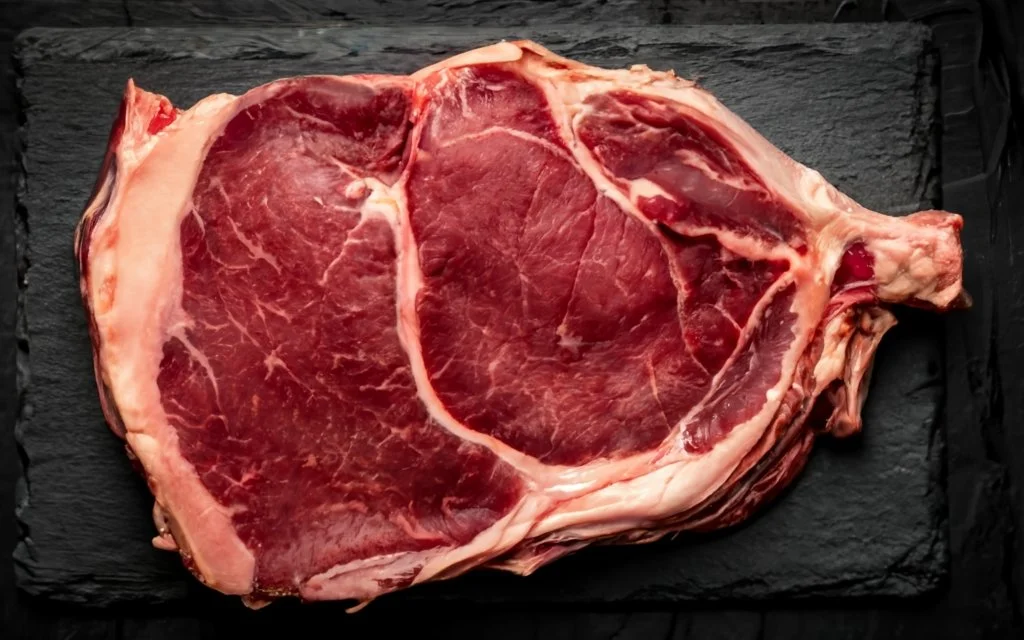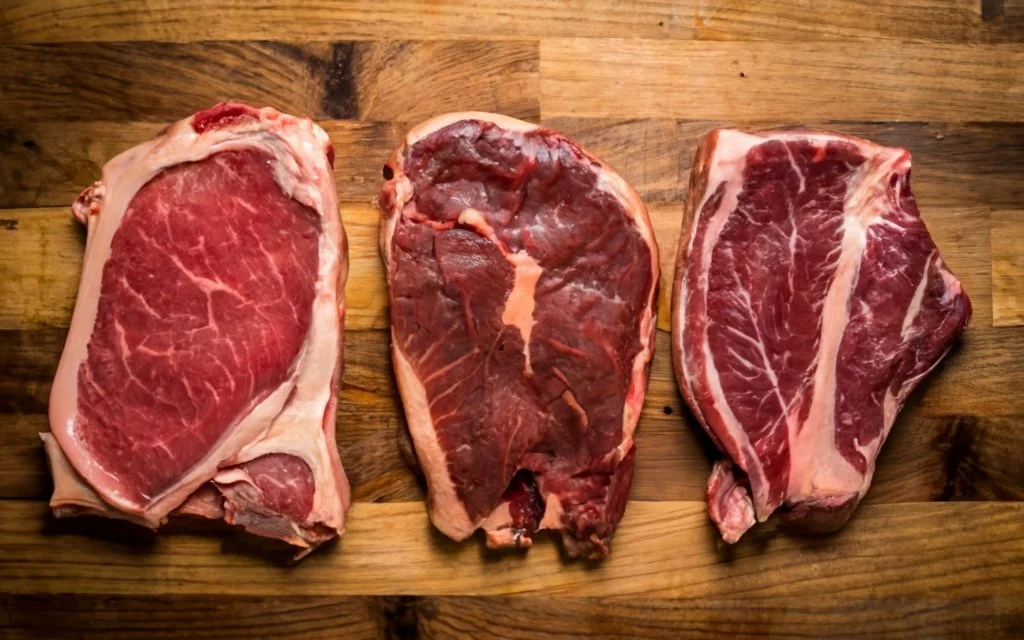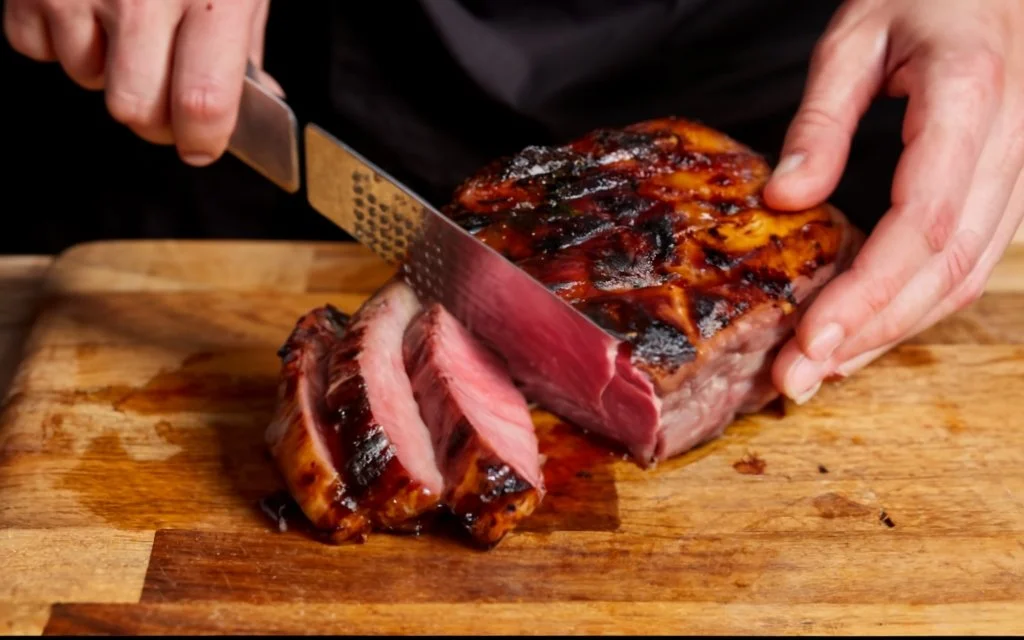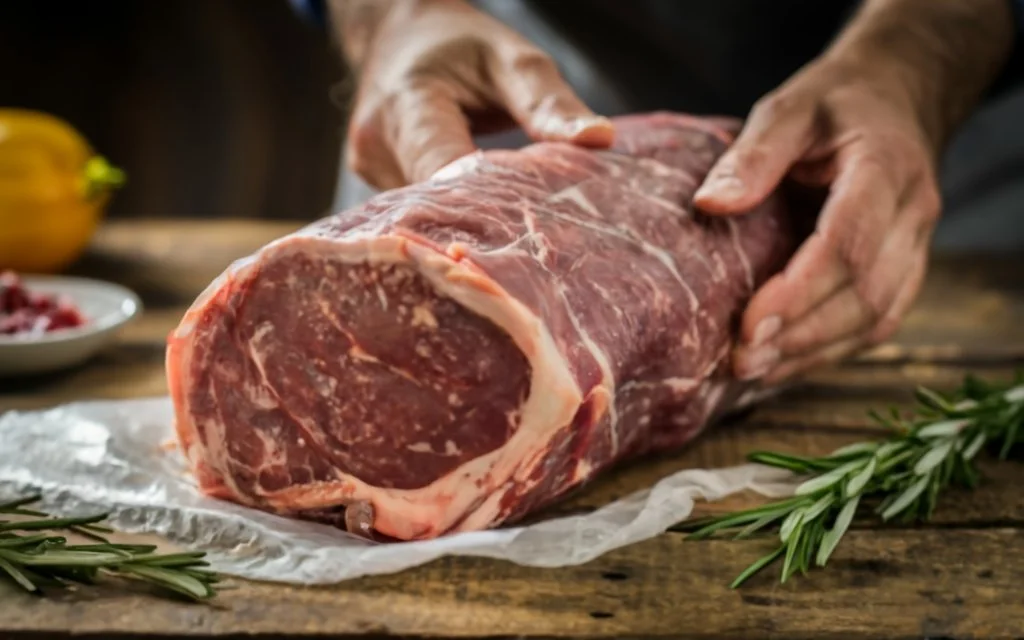Introduction to Flap Meat
H1: Understanding Flap Meat: A Hidden Gem

Flap meat, often overshadowed by its more famous counterparts like ribeye or sirloin, is finally stepping into the spotlight. But what exactly is this elusive cut, and why should it earn a place on your plate?
H2: Definition and Origin
meat, also known as bottom sirloin butt, is a robust cut of beef that hails from the lower belly of the cow.
This area, renowned for its well-developed muscles, imparts the meat with a rich, deep flavor and a pleasingly chewy texture. Historically, butchers would often reserve this cut for themselves, highlighting its desirability and taste as a testament.
H2: Comparison with Skirt and Flank Steaks

When it comes to beef cuts, it’s all about location, location, location! meat is often compared to skirt and flank steaks due to its proximity in the cow’s anatomy. However, meat stands out with its distinctive grain and marbling. While skirt steak might win in popularity contests, especially in restaurants, meat is the unsung hero that offers a similar taste and texture profile at a more wallet-friendly price. It’s like finding a hidden treasure in the vast sea of beef cuts!
So, why not venture beyond the usual and explore the rich flavors and textures of meat ? Stay tuned as we delve deeper into the culinary uses, health benefits, and cooking secrets of this exceptional cut. Whether you’re grilling up a storm or slow-cooking for comfort, flap is sure to impress with its versatility and deliciousness. Let’s embark on this bob-marley – drink-tribute together!
Characteristics of Meat
H1: The Unique Qualities of Flap Meat
Dive into the world of meat, and you’ll find a treasure trove of culinary potential. This section will explore the texture, flavor, and various aspects that make flap a standout choice for many dishes.
H2: Texture and Flavor Profile
meat is celebrated for its robust texture and profound beefy flavor. Its grainy texture is not just a characteristic but a canvas for culinary creativity. When cooked properly, it offers a tender chewiness that’s both satisfying and versatile. The flavor? Think of it as the beef’s answer to umami – rich, deep, and capable of holding its own against exploring-piquillo-peppers-culinary-benefits-recipes
H2: Common Cuts and Sizes
Typically, flap comes in larger sizes compared to its cousins, the skirt and flank steaks. Averaging between 3 to 4 pounds, it’s a bountiful cut that’s perfect for feeding a crowd or meal prepping for the week. This generous size doesn’t just mean more to enjoy; it also means more surface area for creating that perfect sear or crust, elevating your dishes to new heights.
H2: Price Comparison and Value
In the world of steaks, meat is like finding a designer dress at a thrift store price. It offers a similar eating experience to more expensive cuts like skirt steak but often at a more budget-friendly cost. This value isn’t just about saving a few bucks; it’s about Comprehensive Guide on Flap Meat democratizing deliciousness, making rich flavors and tender textures accessible to more people. So next time you’re at the butcher’s, ask for meat and experience gourmet without the gouge.
Culinary Uses
H1: Cooking with Flap Meat
Flap meat, with its unique texture and flavor, is a versatile star in the kitchen. This section will guide you through the best methods to cook meat, along with some tantalizing recipe ideas.
H2: Best Cooking Methods
meat, a chameleon in the culinary world, adapts beautifully to various cooking methods. However, to truly honor its texture and flavor, certain techniques stand out.
H3: Marinating Techniques

Marinating is like giving meat a passport to flavor town. Its coarse texture is a perfect canvas for absorbing marinades, tenderizing the meat while infusing it with layers of flavor. Whether you opt for a zesty citrus marinade or a rich, savory blend, ensure the meat is thoroughly coated and allowed to marinate for several hours, if not overnight. This process not only enhances the taste but also ensures a tender, succulent bite.
H3: Grilling and Searing Tips
Grilling or searing meat unlocks its full potential. The key is high heat and quick cooking. This approach creates a delightful char on the outside while keeping the inside juicy and flavorful. Remember, In-depth Flap Meat Cooking Techniques is relatively thin, so it cooks quickly – a few minutes per side should do the trick. And don’t forget to let it rest! A brief rest allows the juices to redistribute, ensuring each slice is as moist and flavorful as possible.
H2: Recipe Ideas
Flap meat’s versatility shines in a variety of recipes. From quick weeknight dinners to elaborate weekend feasts, it’s a cut that can do it all.
H3: Quick Weeknight Dinners
For a speedy yet satisfying meal, consider a simple flap meat stir-fry with vegetables. Slice the meat thinly, toss it in a hot wok with your favorite veggies, and voila – dinner is served in minutes. Alternatively, best-birria-tacos-near-me are a crowd-pleaser, offering a fun and customizable meal option.
H3: Marinades and Flavors from Around the World
Embrace global flavors with flap meat. Try a Korean-inspired marinade with soy sauce, sesame oil, and garlic, or go for a Mediterranean twist with olive oil, lemon, and herbs. The meat’s adaptability to different cuisines makes it an exciting ingredient for culinary exploration.
Substitutes and Alternatives
H1: Alternatives to Flap Meat
Sometimes, flap meat might not be readily available, or perhaps you’re looking to experiment with different textures and flavors. Fear not, as there are several worthy substitutes that can take your dish to new heights.
H2: When to Use Skirt, Flank, or Hanger Steaks
Skirt, flank, and hanger steaks are the most common alternatives to flap meat, each bringing its unique qualities to the table.
- Skirt Steak: Known for its intense beefy flavor, skirt steak is a great alternative, especially for dishes that require quick cooking at high temperatures. It’s perfect for stir-fries or fajitas where its flavor can really shine.
- Flank Steak: Flank steak is leaner and has a wider, flatter shape. It’s excellent for grilling and works well in recipes that call for marinated beef. Its texture is a bit firmer, making it ideal for slicing thinly against the grain.
- Hanger Steak: Hanger steak, or butcher’s steak, is prized for its flavor. It’s a bit thicker and juicier, making it a good option for grilling or broiling. It’s a bit pricier but worth it for the tenderness and taste.
H2: Tips for Selecting the Best Substitute
When selecting a substitute for flap meat, consider the cooking method and the desired texture and flavor of the final dish. Here are some tips:
- Match the Cooking Method: If you’re grilling, look for a substitute that holds up well to high heat, like skirt or hanger steak. For slower cooking methods, flank might be a better option.
- Consider the Texture: If you prefer a tender, juicy bite, hanger steak might be your best bet. For something a bit chewier and more robust, skirt or flank will do the trick.
- Flavor Profile: All these cuts are beefy and flavorful, but each has its nuances. Skirt steak is the most similar to flap meat in terms of flavor, so it’s often the go-to substitute.
Nutritional Information
H1: Health and Nutrition: Flap Meat
It’s not just about the taste; understanding the nutritional aspects of flap meat is crucial for making informed dietary choices. In this section, we’ll explore the macronutrient profile and considerations for dietary restrictions.
H2: Macronutrient Profile
Flap meat may be a flavorful delight, but it’s essential to know what you’re consuming. Here’s a breakdown of the macronutrients you’ll find in a serving of flap meat:
- Protein: Flap meat is a protein powerhouse, making it an excellent choice for those looking to increase their protein intake. A typical serving can provide a substantial portion of your daily protein needs.
- Fat: While it contains some fat, flap meat is generally lean compared to other cuts like ribeye or T-bone. This makes it a great option for those watching their fat intake.
- Carbohydrates: Virtually none. Flap meat is a low-carb choice, making it suitable for low-carb or keto diets.
H2: Considerations for Dietary Restrictions
Flap meat can be a versatile addition to various dietary plans, but there are some considerations to keep in mind:
- Low-Carb Diets: Flap meat is a fantastic choice for low-carb diets due to its minimal carbohydrate content.
- High-Protein Diets: If you’re aiming to boost your protein intake, meat can be an excellent source, helping you build and repair muscles.
- Paleo Diet: Flap meat aligns well with the paleo diet, which emphasizes whole foods and avoids processed products.
- Gluten-Free: It’s naturally gluten-free, making it suitable for those with gluten sensitivities or celiac disease.
Purchasing and Storage
H1: Buying and Storing Flap Meat
Now that you’re well-versed in the virtues of flap meat, it’s time to learn how to procure and preserve this delectable cut.In this section, we’ll delve into where you can source top-quality flap meat and provide you with best practices for its storage and preservation.
H2: Where to Find Quality Flap Meat
The journey to enjoying flap meat starts at your local butcher or meat counter. Here are some tips for finding the best quality:
- Local Butcher: Visit your neighborhood butcher, if possible. They often have a selection of fresh, high-quality cuts, and they can provide expert guidance.
- Quality Meat Markets: Specialized meat markets tend to offer a wide range of cuts, including flap meat. Look for reputable ones in your area.
- Online Retailers: If you can’t find flap meat locally, some online retailers specialize in delivering premium meats to your doorstep. Be sure to check reviews and ratings for reliability.
H2: Best Practices for Storage and Preservation

To ensure your flap meat stays fresh and maintains its exceptional quality, follow these storage guidelines:
- Refrigeration: If you plan to use flap meat within a day or two, store it in the refrigerator at temperatures below 40°F (4°C). Place it in an airtight container or wrap it tightly in plastic wrap to prevent air exposure.
- Freezing: If you won’t be using it immediately, consider freezing flap meat. Wrap it in plastic wrap or aluminum foil and place it in a freezer-safe bag or container. Label with the date for reference. Flap meat can be stored in the freezer for up to six months without significant loss of quality.
- Thawing: When ready to use frozen flap meat, transfer it to the refrigerator to thaw slowly. Avoid thawing at room temperature, as it can lead to uneven thawing and compromise texture.
- Use-By Date: Pay attention to any use-by or sell-by dates if purchasing from a store. Consume or freeze the meat before the indicated date for optimal freshness.
FAQs
H1: Frequently Asked Questions
As we conclude our exploration of flap meat, let’s address some common questions and offer concise answers to ensure you’re well-prepared to make the most of this delightful cut.
H2: Is flap meat good for grilling?
Absolutely! Flap meat’s thinness and distinctive texture make it an excellent choice for grilling. High heat, quick cooking, and the right marinade can result in a flavorful, tender, and charred masterpiece.
H2: How do I make flap meat tender?
Marination is the key to tenderness. Use a marinade with acidic components like citrus or vinegar to help break down the meat’s fibers. Additionally, slicing against the grain after cooking enhances tenderness.
H2: Can I substitute flap meat for skirt steak in recipes?
Yes, you can! Flap meat is often considered a suitable substitute for skirt steak due to its similar texture and flavor. Use it in your favorite skirt steak recipes for a delightful twist.
H2: How long should I marinate flap meat?
Marinating times can vary, but for flap meat, aim for at least 30 minutes to 6 hours. Longer marination can impart more flavor and tenderness, but avoid excessively long marinating periods, as the meat can become mushy.
What are the best side dishes to serve with flap meat?
Flap meat pairs well with a variety of side dishes, including grilled vegetables, mashed potatoes, garlic bread, or a fresh salad. The versatility of meat allows you to get creative with your sides!
Conclusion
In the realm of culinary delights, flap stands as a hidden gem, patiently awaiting discovery. Throughout this comprehensive guide, we’ve embarked on a journey that has encompassed every facet of meat, from its definition and origin to its distinctive qualities, culinary applications, and nutritional insights. To enhance the readability of the text and ensure a smoother, more engaging reading experience, let’s infuse our conclusion with additional transition words and phrases. We’ve also covered the best substitutes, where to find quality flap , and how to store it correctly.
In conclusion, flap meat is more than just a cut of beef; it’s an invitation to explore new flavors, textures, and cooking techniques. Its versatility, affordability, and deliciousness make it a valuable addition to any kitchen. Whether you’re grilling it to perfection, marinating it for tenderness, or using it in various cuisines, meat offers a world of possibilities.
As you embark on your culinary journey with flap , it’s crucial to remember the tips, techniques, and insights shared in this guide. Whether you’re a seasoned chef or an advent lipton-onion-soup-mix-guide urous home cook, meat has something to offer everyone.
So, the next time you’re at your local butcher or meat market, don’t hesitate to ask for flap .
Embrace this underrated cut and let your creativity run wild in the kitchen. From quick weeknight dinners to flavorful feasts, meat is ready to steal the show and satisfy your taste buds

